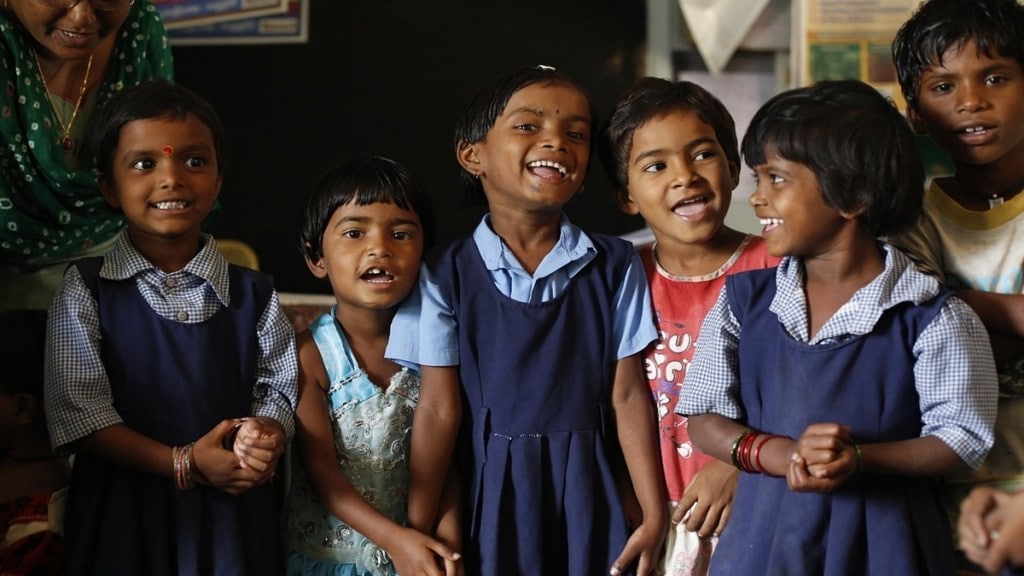PM SHRI (PM Schools for Rising India) is a centrally sponsored scheme, approved in 2022 by the Government of India, which aims at developing over 14,500 schools managed by the Central Government, State Governments, UT Governments, local bodies, KVS, and NVS. More than 18 lakh students are expected to be direct beneficiaries of the scheme.
The scheme, which comes under the Department of School Education and Literacy, intends to nurture students to become engaged, productive, and contributing citizens, aligning with the goals of the National Education Policy 2020 for an equitable, inclusive, and pluralistic society. The scheme carries a total project cost of Rs 27,360 crore, with a central share amounting to Rs 18,128 crore over a five-year period from 2022-23 to 2026-27.
The Budget Estimates for FY25 for the PM SHRI scheme is Rs 6,050 crore. The Budget Estimates for the central scheme in 2023-24 was Rs 4,000 crore, while the Revised Estimates for FY24 was Rs 2,800 crore, as shown in the interim Budget, which was presented on February 1.
Key features of PM SHRI scheme
-The scheme aims to provide high-quality education in an equitable, inclusive and joyful school environment that takes care of the diverse background, multilingual needs, and different academic abilities of children and makes them active participants in their own learning process as per the vision of National Education Policy 2020.
-PM SHRI Schools will provide leadership to other schools in their respective regions by providing mentorship.
-The PM SHRI schools will be developed as Green schools, incorporating environment friendly aspects like solar panels and LED lights, nutrition gardens with natural farming, waste management, plastic free, water conservation and harvesting, study of traditions/practices related to protection of environment, climate change related hackathon and awareness generation to adopt sustainable lifestyle.
-Pedagogy adopted in these schools will be more experiential, holistic, integrated, play/toy-based (particularly, in the foundational years) inquiry-driven, discovery-oriented, learner-centred, discussion-based, flexible and enjoyable.
-Focus will be on learning outcomes of every child in every grade. Assessment at all levels will be based on conceptual understanding and application of knowledge to real life situations and will be competency-based.
-Assessment of the resources available and their effectiveness in terms of availability, adequacy, appropriateness, and utilisation for each of the domains and their key performance indicators will be done and gaps will be filled in a systematic and planned manner.
-Linkage with Sector Skill Councils and local industry for enhancing employability and providing better employment opportunities will be explored.
-A School Quality Assessment Framework (SQAF) is being developed, specifying the key performance indicators to measure outcomes. Quality evaluation of these schools at regular interval will be undertaken to ensure the desired standards.
Implementation strategy of PM SHRI schools
-PM SHRI Schools would be implemented through the existing administrative structure available for Samagra Shiksha, KVS & NVS. The other autonomous bodies would be involved on specific project basis as required.
-These schools shall be monitored vigorously to assess progress and understand the challenges faced in implementation of National Education Policy 2020.
Selection Methodology of PM SHRI scheme
Selection of PM SHRI schools is done through Challenge Mode wherein schools compete for support to become exemplar schools. Schools would be required to self-apply on the online portal. The portal will be opened four times a year, once every quarter, for first two years of the scheme.
The Elementary schools (Class 1-5/1-8) & the Secondary/ Sr. Secondary Schools (Class1-10/1-12/6-10/6-12) managed by Centre/State/UT Governments / local self-governments having UDISE+ code would be considered for selection under the Scheme. Selection would be done through a three-stage process with definite timelines, which are as follows: –
Stage-1: States/UTs would sign MoU agreeing to implement NEP in its entirety with the Centre laying down the commitments for supporting these schools for achieving specified quality assurance as PM SHRI schools.
Stage-2: In this stage, a pool of schools that are eligible to be selected as PM SHRI Schools would be identified based on the prescribed minimum benchmark through UDISE+ data.
Stage-3: This stage is based on the challenge method for fulfilling certain criteria. Only the schools from the above eligible pool of schools would compete to fulfill the challenge conditions. Fulfillment of conditions would be certified by States/KVS/JNV through physical inspection. States/UTs/KVS/JNV shall verify the claims reported by Schools and recommend the list of schools to the Ministry.
Maximum two schools (one Elementary & one Secondary/Senior Secondary) would be selected per block/ULB with upper limit of number of total schools across India. Geo-tagging of schools for the selection and monitoring of PM SHRI schools will be done. The services of Bhaskaracharya National Institute for Space Applications and Geo-informatics (BISAG-N) will be taken for geo-tagging and other related tasks. An Expert committee would be constituted for final selection of schools.

